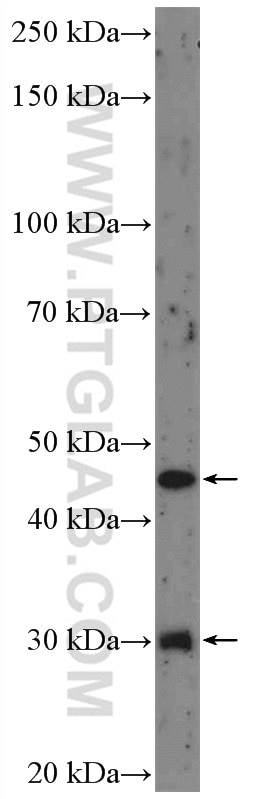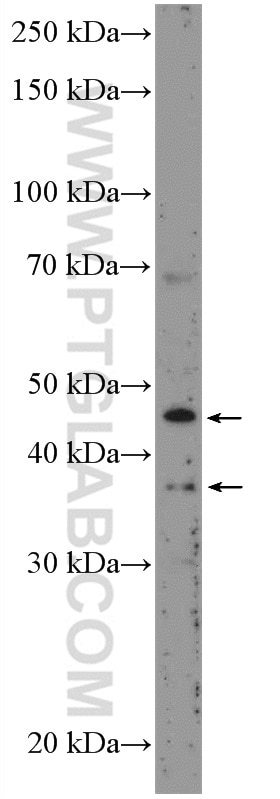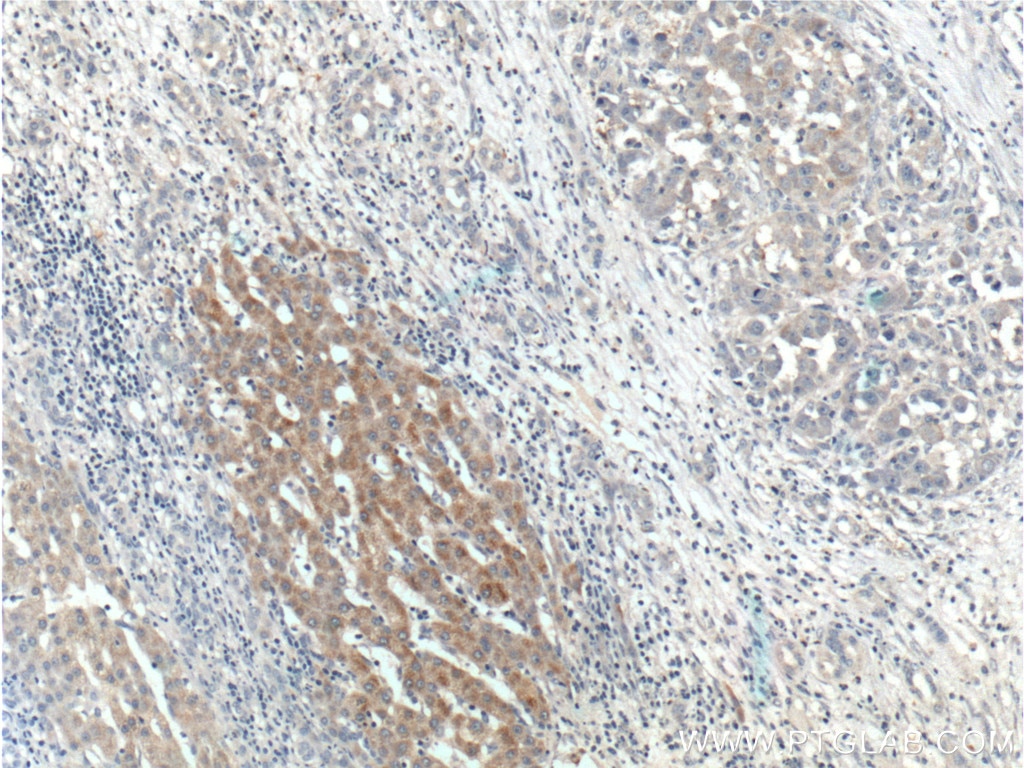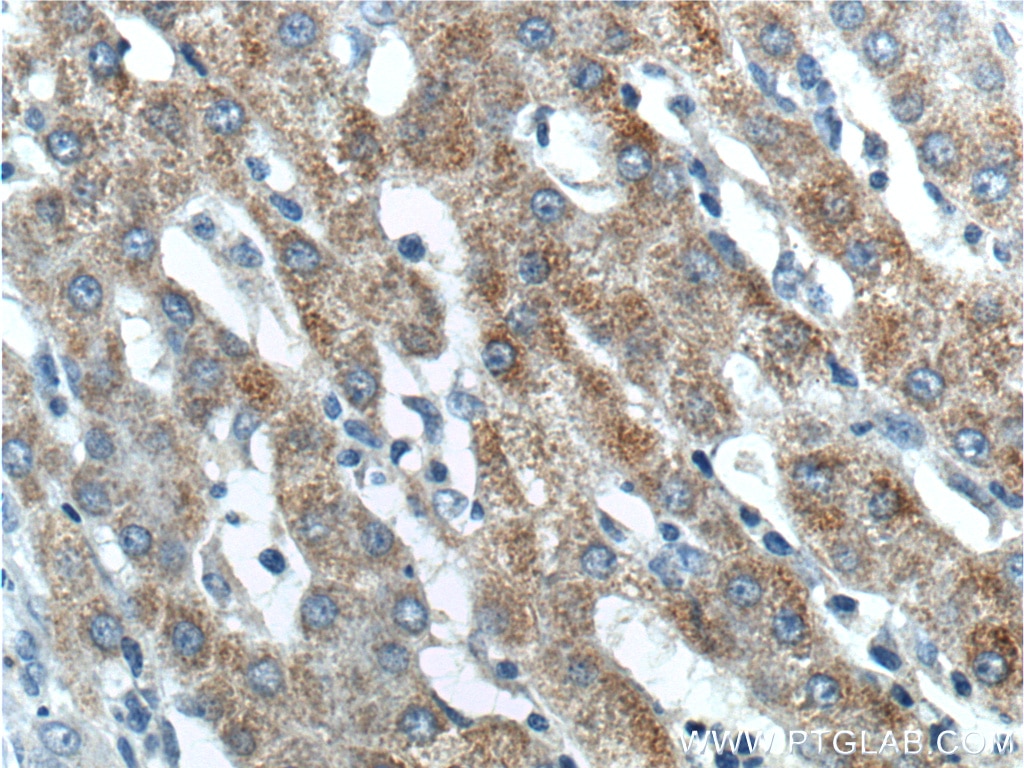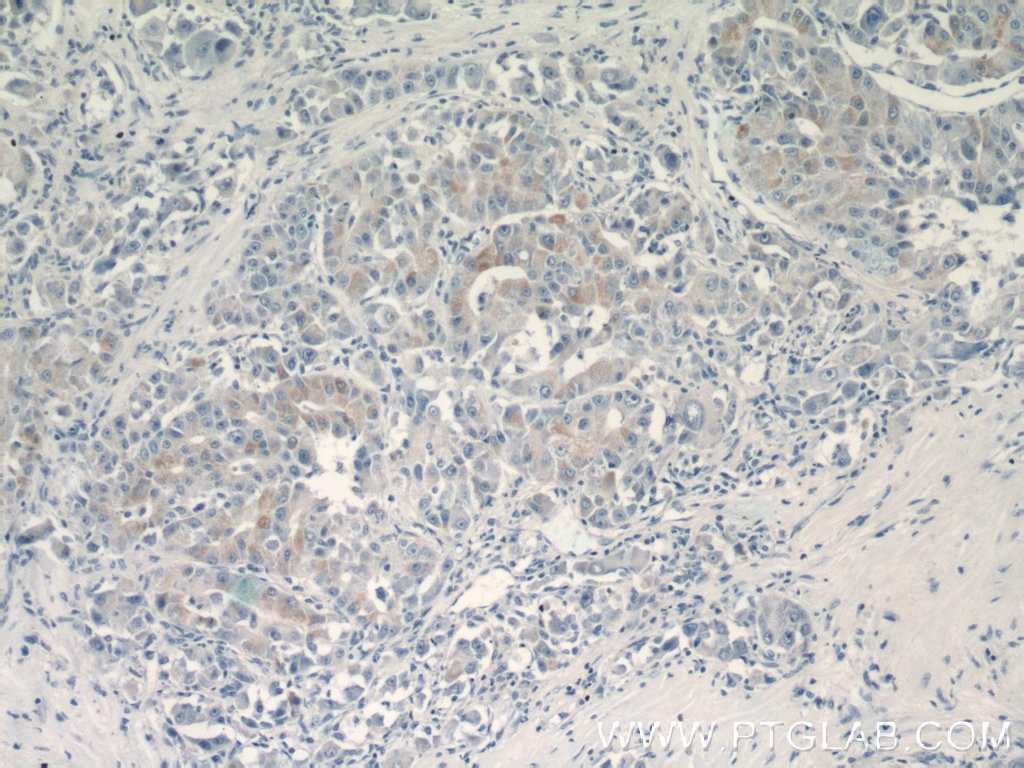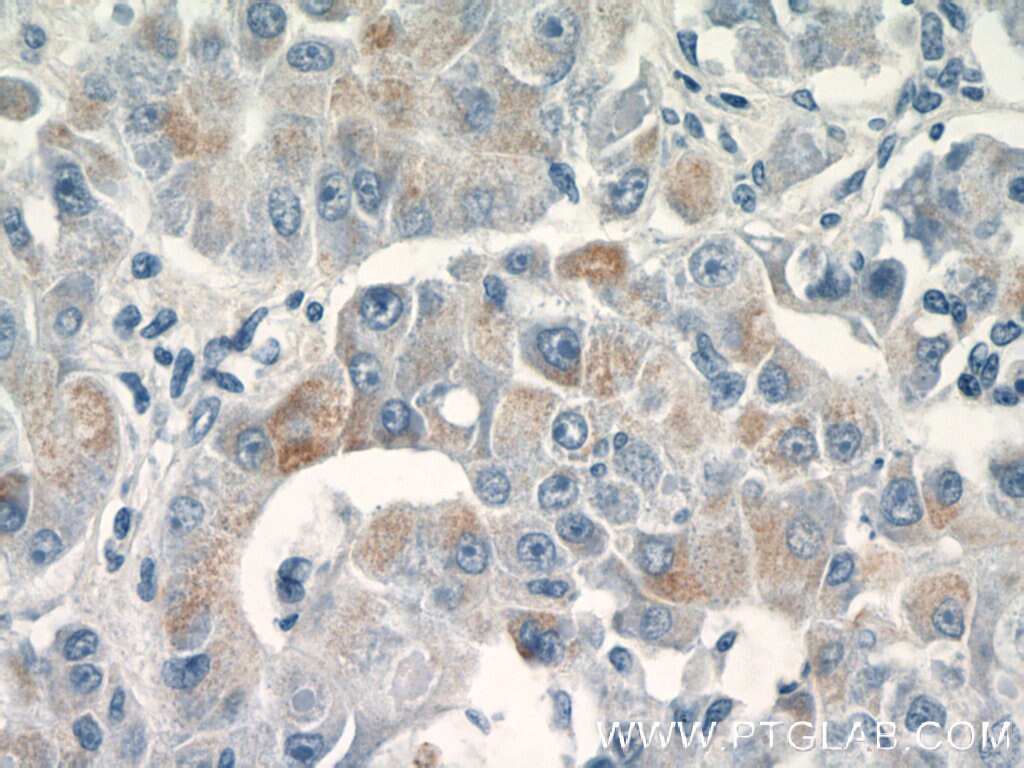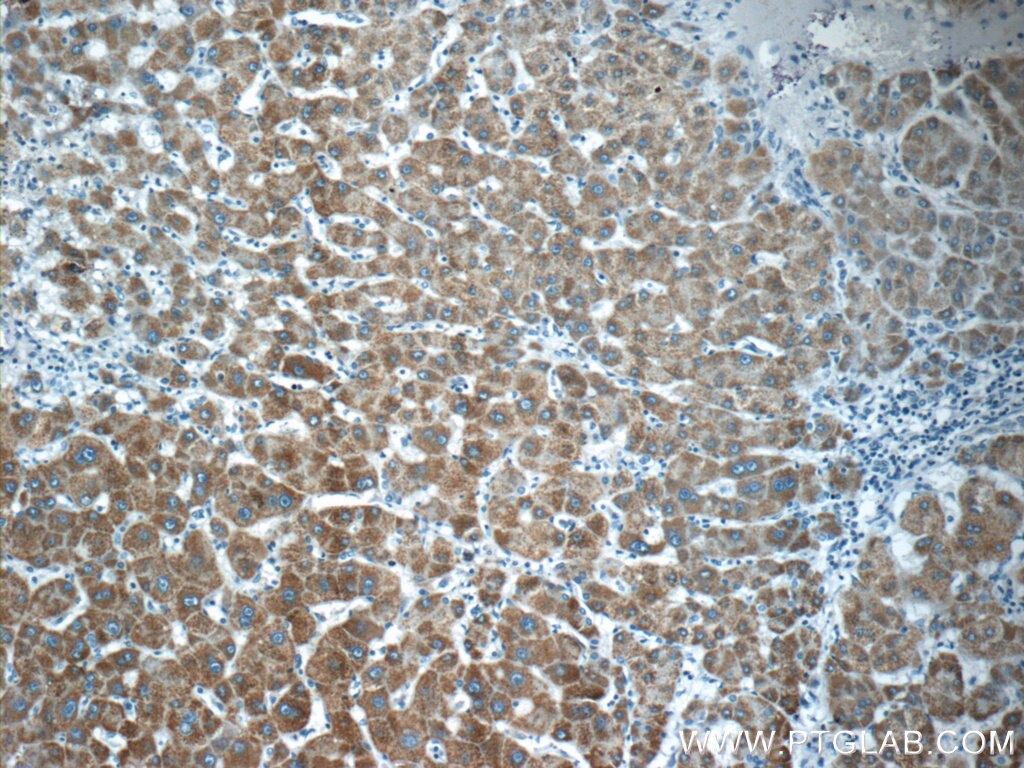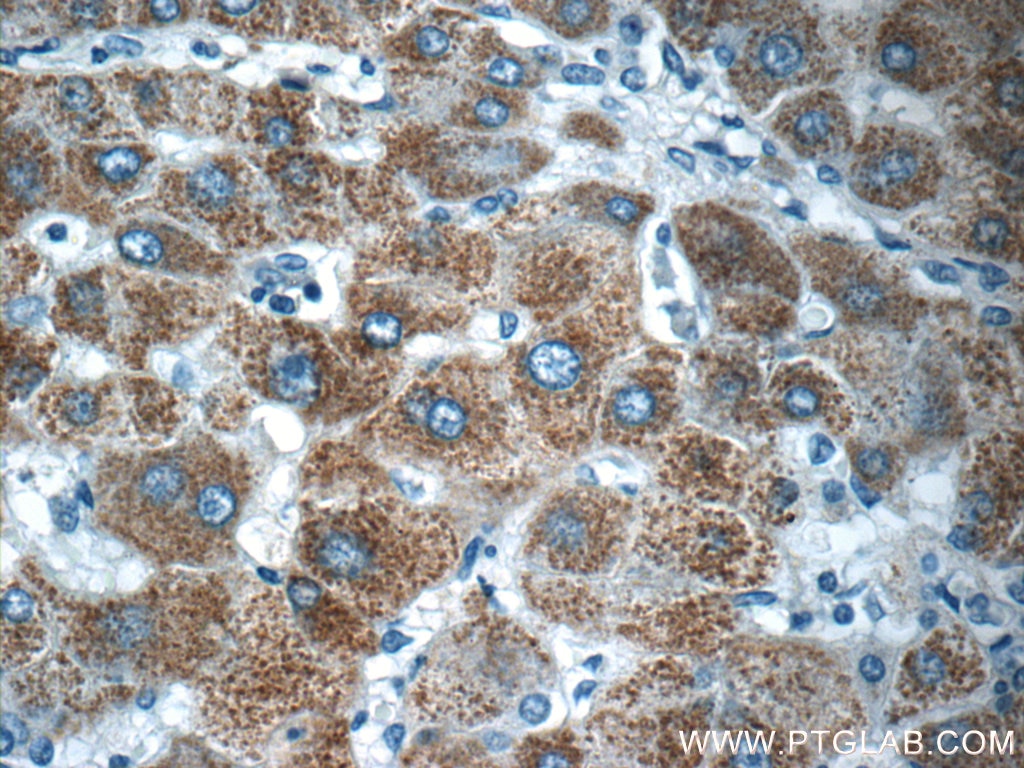Tested Applications
| Positive WB detected in | L02 cells, SMMC-7721 cells |
| Positive IHC detected in | human liver cancer tissue, human hepatocirrhosis tissue Note: suggested antigen retrieval with TE buffer pH 9.0; (*) Alternatively, antigen retrieval may be performed with citrate buffer pH 6.0 |
Recommended dilution
| Application | Dilution |
|---|---|
| Western Blot (WB) | WB : 1:200-1:1000 |
| Immunohistochemistry (IHC) | IHC : 1:50-1:500 |
| It is recommended that this reagent should be titrated in each testing system to obtain optimal results. | |
| Sample-dependent, Check data in validation data gallery. | |
Published Applications
| WB | See 3 publications below |
Product Information
17769-1-AP targets BMP-9 in WB, IHC, ELISA applications and shows reactivity with human samples.
| Tested Reactivity | human |
| Cited Reactivity | human, mouse, rat |
| Host / Isotype | Rabbit / IgG |
| Class | Polyclonal |
| Type | Antibody |
| Immunogen |
CatNo: Ag12177 Product name: Recombinant human BMP9 protein Source: e coli.-derived, PGEX-4T Tag: GST Domain: 23-429 aa of BC074921 Sequence: KPLQSWGRGSAGGNAHSPLGVPGGGLPEHTFNLKMFLENVKVDFLRSLNLSGVPSQDKTRVEPPQYMIDLYNRYTSDKSTTPASNIVRSFSMEDAISITATEDFPFQKHILLFNISIPRHEQITRAELRLYVSCQNHVDPSHDLKGSVVIYDVLDGTDAWDSATETKTFLVSQDIQDEGWETLEVSSAVKRWVRSDSTKSKNKLEVTVESHRKGCDTLDISVPPGSRNLPFFVVFSNDHSSGTKETRLELREMISHEQESVLKKLSKDGSTEAGESSHEEDTDGHVAAGSTLARRKRSAGAGSHCQKTSLRVNFEDIGWDSWIIAPKEYEAYECKGGCFFPLADDVTPTKHAIVQTLVHLKFPTKVGKACCVPTKLSPISVLYKDDMGVPTLKYHYEGMSVAECGCR Predict reactive species |
| Full Name | growth differentiation factor 2 |
| Calculated Molecular Weight | 429 aa, 47 kDa |
| Observed Molecular Weight | 30 kDa, 46 kDa |
| GenBank Accession Number | BC074921 |
| Gene Symbol | BMP9 |
| Gene ID (NCBI) | 2658 |
| RRID | AB_2878437 |
| Conjugate | Unconjugated |
| Form | Liquid |
| Purification Method | Antigen affinity purification |
| UNIPROT ID | Q9UK05 |
| Storage Buffer | PBS with 0.02% sodium azide and 50% glycerol, pH 7.3. |
| Storage Conditions | Store at -20°C. Stable for one year after shipment. Aliquoting is unnecessary for -20oC storage. 20ul sizes contain 0.1% BSA. |
Background Information
BMP9 is a member of the bone morphogenetic protein (BMP) family and the TGF-beta superfamily. This group of proteins is characterized by a polybasic proteolytic processing site which is cleaved to produce a mature protein containing seven conserved cysteine residues. The members of this family are regulators of cell growth and differentiation in both embryonic and adult tissues. Studies in rodents suggest that this protein plays a role in the adult liver and in differentiation of cholinergic central nervous system neurons. Mutations in this gene are associated with hereditary hemorrhagic telangiectasia. Human BMP9 precursor protein contains 429 amino acids and has a calculated molecular mass of about 47 kD. Posttranslational processing results in a mature BMP9 protein of about 13 kD. Once secreted, BMP9 may exist as dimers of mature regions or as BMP9 proregion complexes in which the proregion of BMP9 remains tightly associated with the mature dimer.
Protocols
| Product Specific Protocols | |
|---|---|
| IHC protocol for BMP-9 antibody 17769-1-AP | Download protocol |
| WB protocol for BMP-9 antibody 17769-1-AP | Download protocol |
| Standard Protocols | |
|---|---|
| Click here to view our Standard Protocols |
Publications
| Species | Application | Title |
|---|---|---|
Heliyon CHRDL2 activates the PI3K/AKT pathway to ameliorate glucocorticoid-induced damages to bone microvascular endothelial cells (BMECs) | ||
Int Immunopharmacol Exosomal miR-574-3p from adipose-derived mesenchymal stem modulates CRIM1/BMPs signaling to restrain chondrocytes hypertrophy and inflammatory response in knee osteoarthritis | ||
Geroscience Tilorone attenuates high-fat diet-induced hepatic steatosis by enhancing BMP9-Smad1/5/8 signaling |

